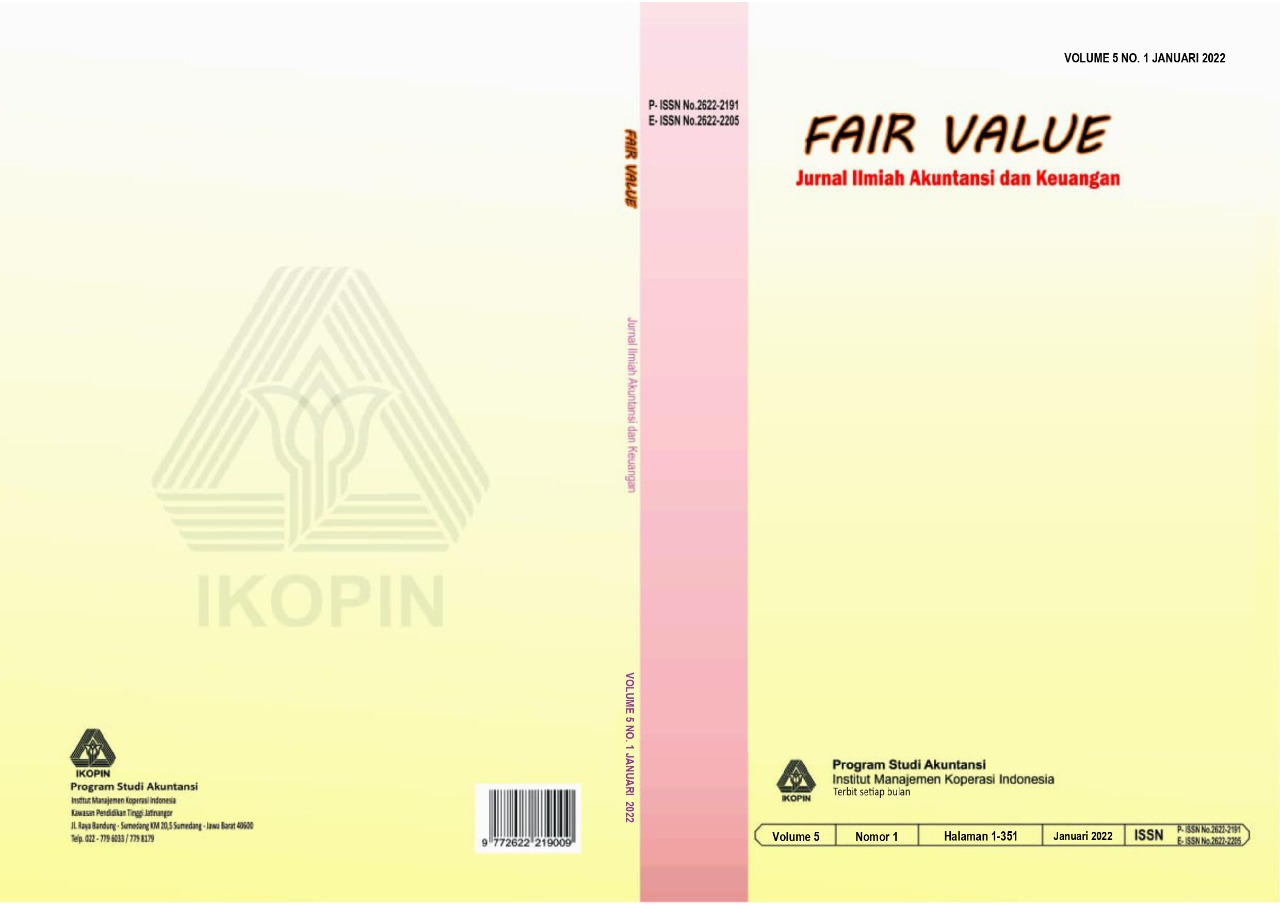Perancangan key risk indicators dalam manajemen risiko
Main Article Content
Abstract
The purpose of this research is to design key risk indicators (KRI) or the main risk indicators for the company’s significant risks. This research takes a case study at PT. A, which operates as a gas energy provider company. The method used in this research is qualitative and quantitative. The KRI design is carried out in the form of determining the medium risk and then determining the root causes, KRI indicators, and the threshold of significant risks that affect the company’s performance both in terms of operational and financial. These significant risks were identified from the company’s risk register. The identified significant risks are the not achieving revenue and the increase in customer receivables. The results of designing KRI from PT. A for not achieving revenue at PT. A obtained three intermediate causes, three root causes, and four KRI indicators. For increase in customer receivables at PT. A obtained one intermediate cause, two root causes, and two KRI indicators. The design of this KRI is expected to provide early mitigation of the potential for major risks that have a major impact on performance achievement.
Article Details
References
Adli, K. (2022). Perancangan Key Risk Indicator sebagai sistem peringatan dini dalam usaha mitigasi risiko (Studi Kasus: PT. PLN (Persero) unit penyaluran dan pusat pengatur beban sistem (Up3b) Kalimantan Barat).
Alfani, M. (2023). Perancangan strategi mitigasi risiko dan key risk indicator sebagai early warning system pada proses bisnis supply chain CV. Tunas Karya.
Amri, H. R., & Subagio, R. T. (2020). Penerapan metode CSI untuk pengukuran tingkat kepuasan layanan manajemen. Jurnal Sistem Cerdas, 3(3), 241–252
Dharma, D. A., Damayanty, P., & Djunaidy, D. (2021). Analisis kinerja keuangan dan corporate governance terhadap manajemen laba. Jurnal Bisnis, Logistik Dan Supply Chain (BLOGCHAIN), 1(2), 60–66.
Hadijaya, Y. (2013). Menyusun strategi berbuah kinerja pendidik efektif. Perdana Publishing.
Husen, H., & Soriton, J. N. (2022). Analisis implementasi manajemen keadaan darurat/bencana berdasarkan nfpa 1600: 2019 di perusahaan pelayanan medis. Binawan Student Journal.
Irawan, J. P., Santoso, I., & Mustaniroh, S. A. (2017). Model analisis dan strategi mitigasi risiko produksi keripik tempe. Industria: Jurnal Teknologi Dan Manajemen Agroindustri, 6(2), 88–96.
Kurniati, A., Nugroho, L. E., & Rizal, M. N. (2020). Manajemen risiko teknologi informasi pada e-government: ulasan literatur sistematis (Information Technology Risk Management on e-Government: Systematic Literature Review). Jurnal IPTEKKOM (Jurnal Ilmu Pengetahuan & Teknologi Informasi), 22(2), 207–222.
Mustopa, R., Ahsaina, N. A., & Rais, Y. (2021). Pelatihan dan pengembangan manajemen sumber daya manusia di masa pandemi covid-19. Jurnal Sosial Teknologi, 1(3), 166–174.
Qintharah, Y. N. (2019). Perancangan penerapan manajemen risiko. JRAK: Jurnal Riset Akuntansi Dan Komputerisasi Akuntansi, 10(1), 67–86.
Ratnasari, F., & Triyonowati, T. (2019). Analisis pengaruh akuisisi terhadap kinerja keuangan perusahaan Bank Permata tbk yang terdaftar di BEI. Jurnal Ilmu Dan Riset Manajemen (JIRM), 8(8).
Sari, M., Hanum, S., & Rahmayati, R. (2022). Analisis manajemen resiko dalam penerapan good corporate governance: Studi pada perusahaan perbankan di Indonesia. Owner: Riset Dan Jurnal Akuntansi, 6(2), 1540–1554.
Sujono, F. B. (2015). Peranan audit internal dalam meningkatkan efektivitas ERM (Enterprise Risk Management)(Studi Kasus Pada PT. Telekomunikasi Indonesia, Tbk Kantor Pusat Bandung). Universitas Widyatama.
Tjahjono, B., & Barus, B. (2020). Analisis bahaya alami (natural hazards) di Kecamatan Baleendah Kabupaten Bandung Jawa Barat. Jurnal Ilmu Tanah dan Lingkungan, 22(1), 1–9.
Warsela, M., Wahyudi, A. D., & Sulistiyawati, A. (2021). Penerapan customer relationship management untuk mendukung marketing credit executive (Studi Kasus: Pt Fif Group). Jurnal Teknologi Dan Sistem Informasi, 2(2), 78–87.

